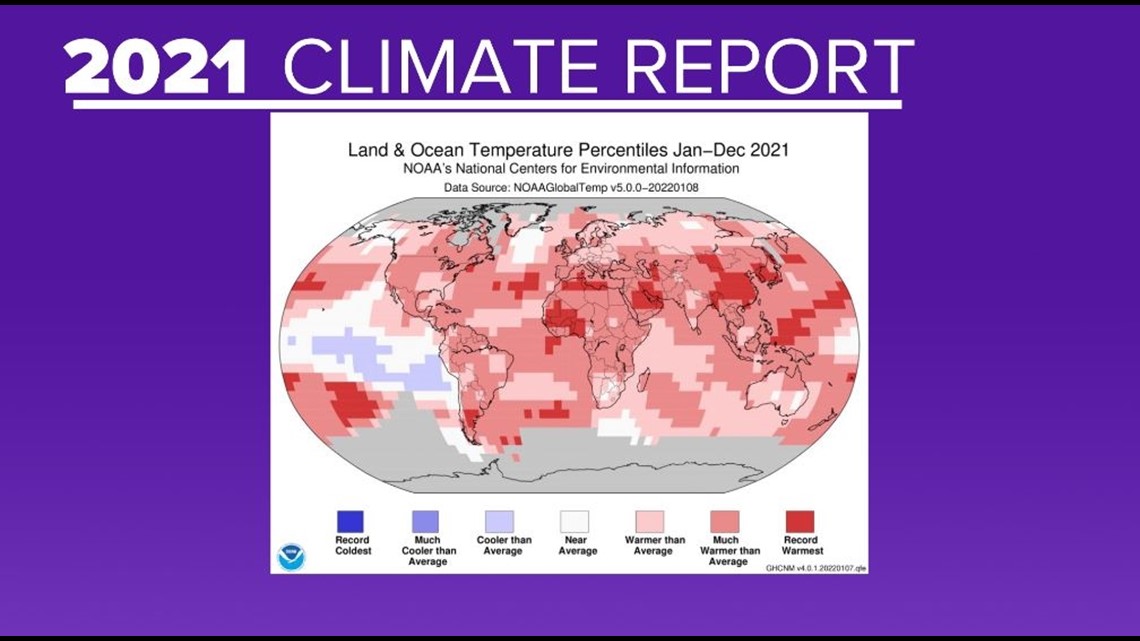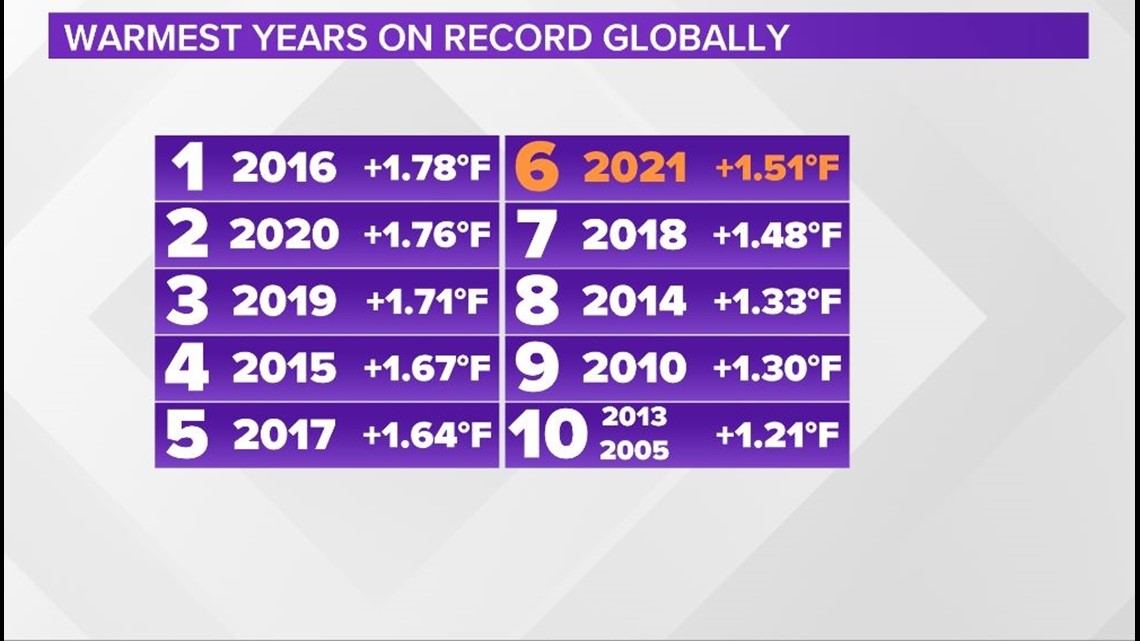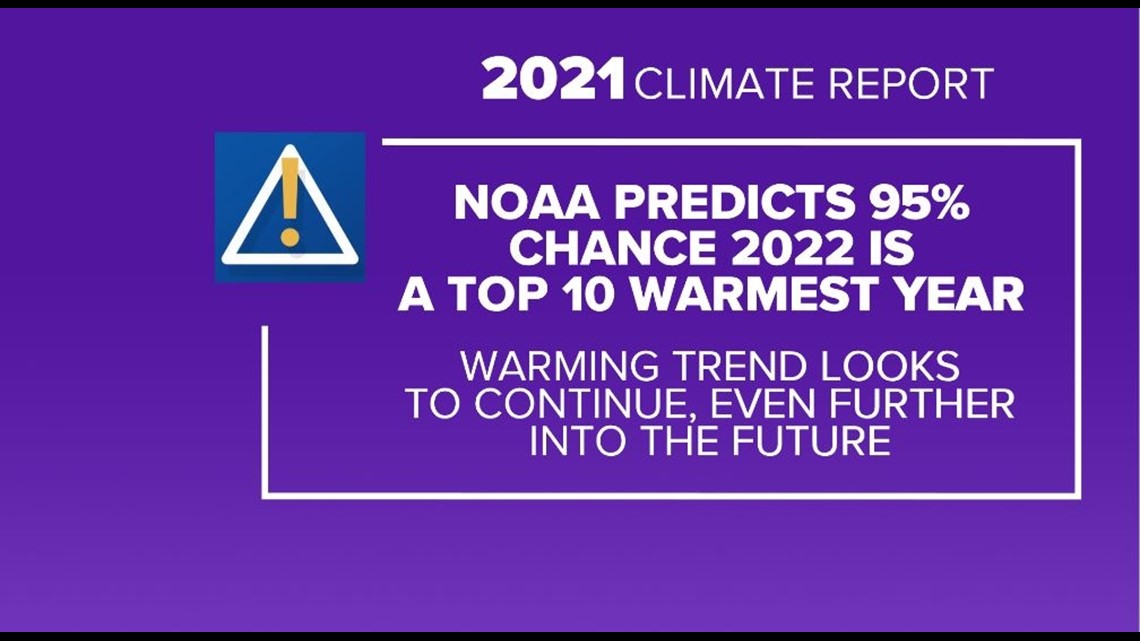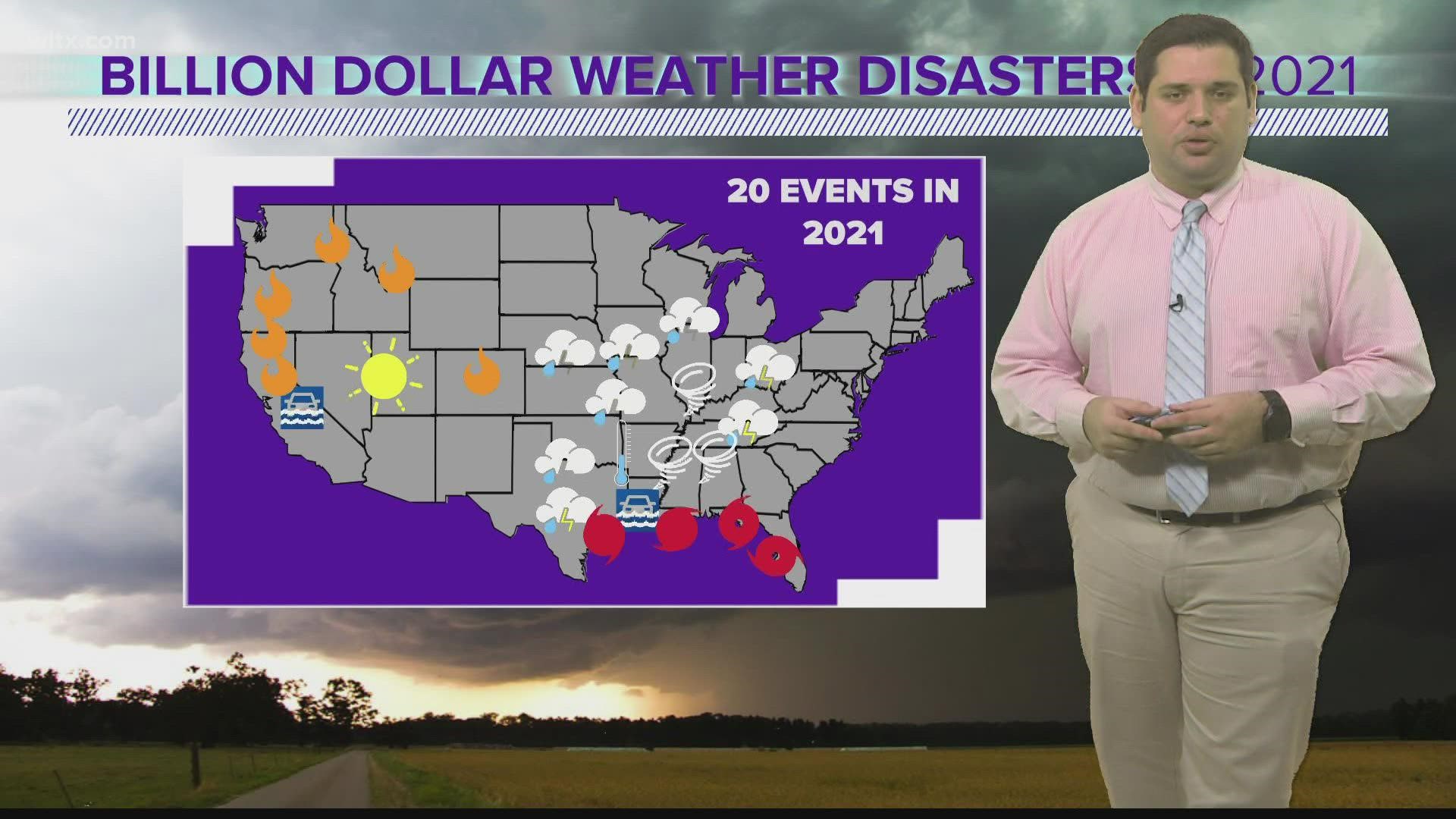COLUMBIA, S.C. — The 2021 NOAA climate report has been released and there are several takeaways from the latest data released by the agency.
2021, was an interesting year which started off with a record cold blast across the central and eastern US. Even with temperatures in portions of the Southern Plains smashing previous records, the entire country ended up with above average temperatures.
2021 Temperatures


Globally, this warmer than average trend is continued, with many locations seeing record warmth last year. The only location that saw below average temperatures was the Eastern Pacific. This can be attributed to the ongoing La Nina which causes cooler ocean temperatures in this region.


Talking to NOAA research meteorologist Jared Rennie, he says that even though 2021 "only" finished as the 6th warmest year on record, this is all part of a more concerning trend we have seen recently.
"So we have temperature records that go back to the 1800s and 2021 stood out as the 6th warmest year on record... what is really important is that over the last 10 years, 9 of those 10 years were the warmest on record."


Viewing things more locally, Columbia reflects this trend of a warming world. Our average low temperatures which are a good indicators of how frequently we see cold weather have been rising over the past six decades. In total, the average yearly low temperature has gone up nearly 5 degrees since 1961.
RELATED: Local Forecast


As for how things ended up for Columbia, 2021 ended up as the 16th warmest year on record. Nothing close to breaking any records, but, still an above average year for the city.
2021 Billion Dollar Weather Disasters
Over the course of 2021, the United States saw a total of 20 billion dollar weather disasters. These ranged from the record-breaking cold weather in February that effected the Southern Plains, including Texas. Record warmth and drought across the west fueled wildfires. Also, warm ocean waters produced a second year in a row with a hyperactive hurricanes season in the Atlantic. The most impactful storm by far, Hurricane Ida, made landfall in Louisiana which had seen multiple hurricanes back in 2020. The storm traveled inland and brought flooding rain all the way to the Northeast.


Jared says, these weather events are being fueled by a warming atmosphere but also warmer ocean waters. The combination of the two means we are seeing an increase in how impactful systems can be. Events that dump heavy rain like the 2015 floods that impacted the Midlands are one of those events that could become more common in a warming world.
"With a warmer environment it actually gives the atmosphere a bigger capacity to hold more water and what the science is telling us is that we are not necessarily seeing more rain events in total. What we are seeing are more intense rain events, especially with things like tropical cyclones."
Looking Forward


According to Jared, NOAA expects that 2022 will likely follow in the footsteps of the past decade. The agency has put out a 95% chance that this year will end up in the top 10 warmest years on record. Going a bit more into the future, it looks like this trend will likely continue as global CO2 emissions continue to lead to more warming across the globe.

